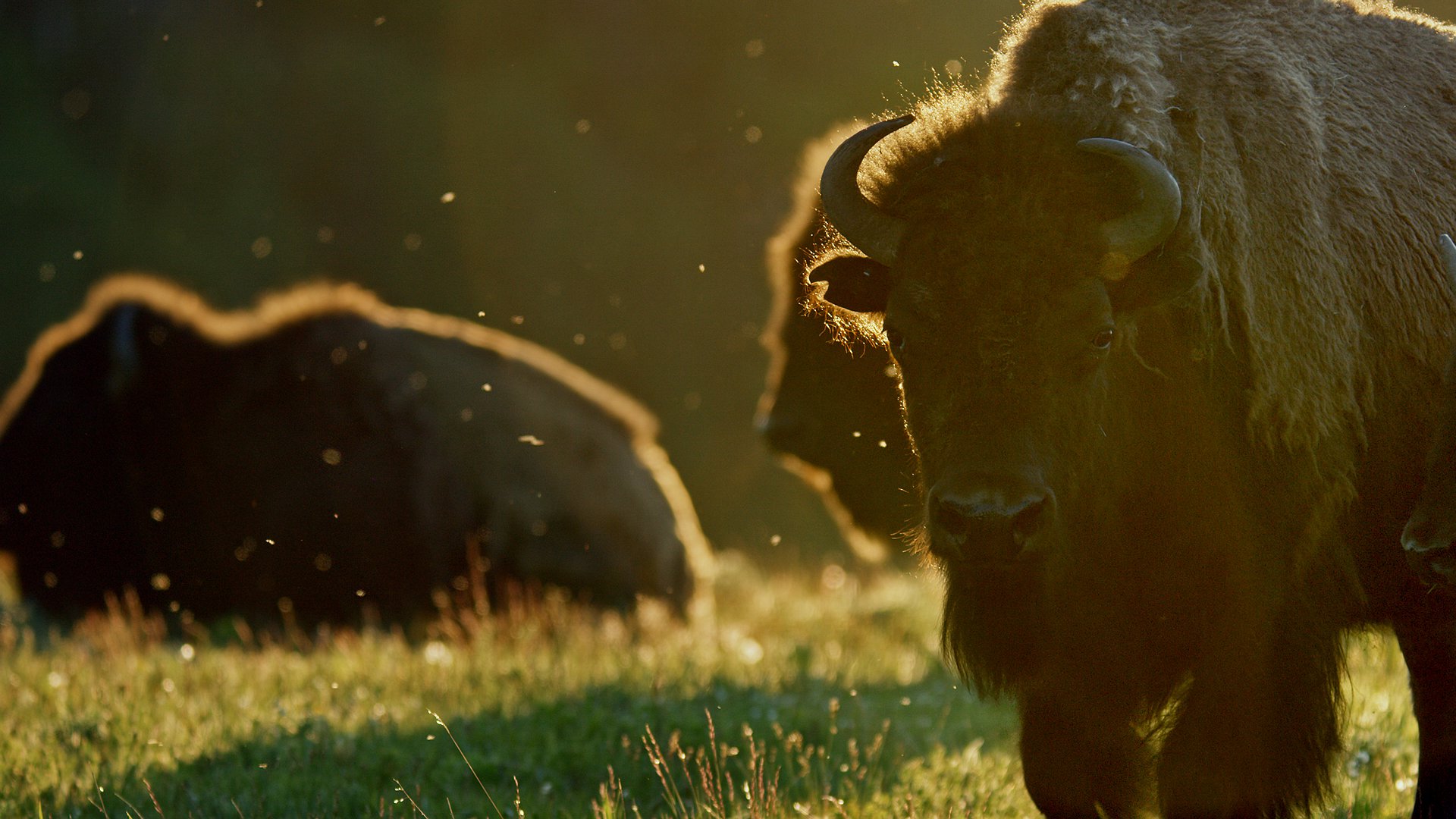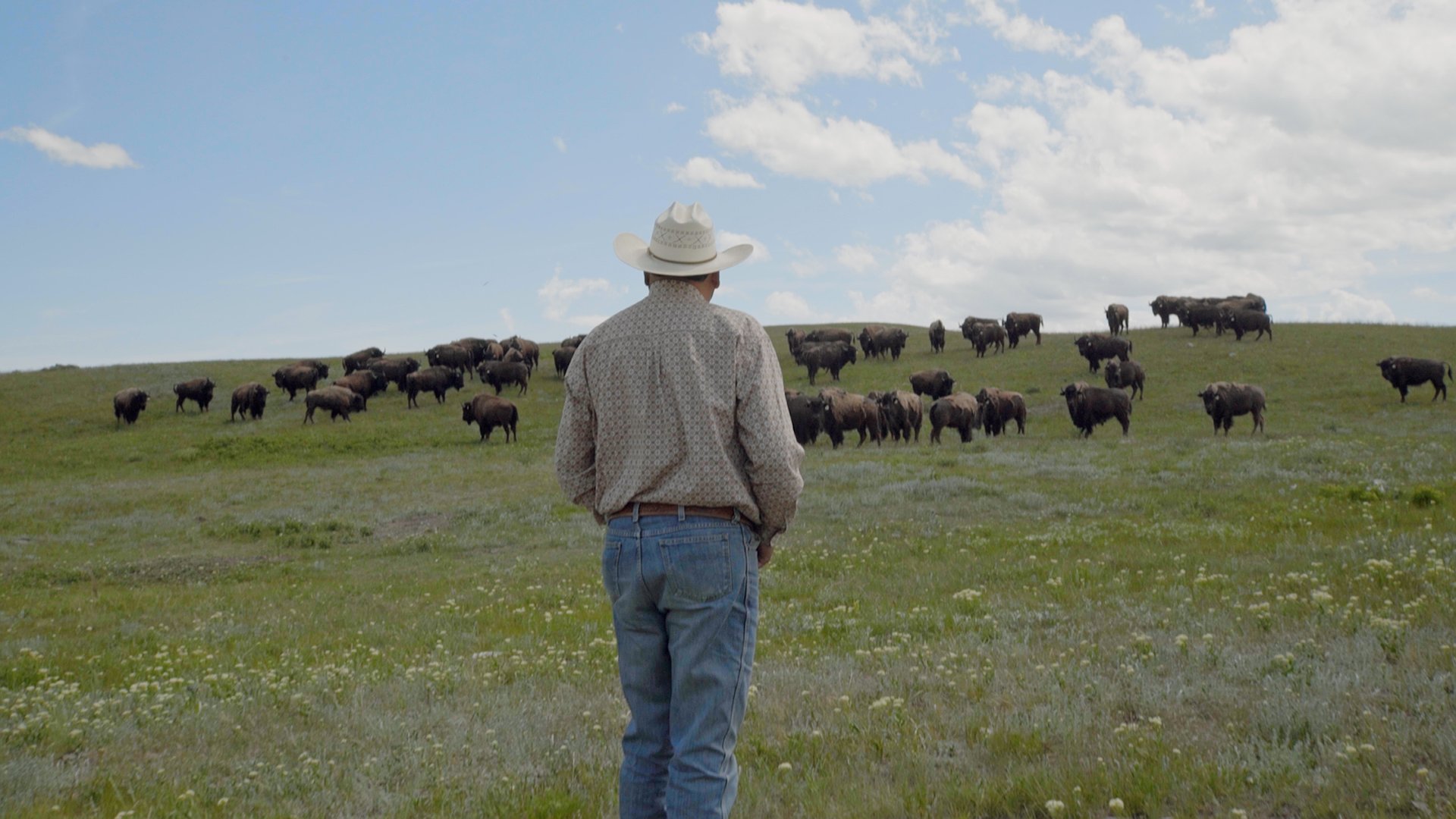Blackfeet bison documentary ‘Bring Them Home’ screens in Kalispell Aug. 29
When filmmaker Ivan McDonald was growing up in Browning, there weren’t many ways to see bison. When a bison was needed for a ceremony, it would typically come all the way from Yellowstone.
“We grew up understanding that the Creator created us and then created bison shortly after, so we'd have something to sustain us, feed us and provide shelter and tools and clothes and all of that,” McDonald said. “So, I grew up really culturally understanding bison, even if they weren't really like apparent on the reservation.”
McDonald is part of Thunderheart Films, a team of filmmakers who got together to document the reintroduction of bison on the Blackfeet Nation after they were nearly brought to extinction a century ago. “Bring Them Home” screens at the Wachholz College Center on the Flathead Valley Community College campus in Kalispell on Aug. 29.
Daniel Glick, director, producer and writer, was drawn to create something about the bison and in the process of making a short film in 2016, he learned from someone who managed bison herds on the Blackfeet reservation that there was a plan to reintroduce wild herds onto the landscape.
“I thought ‘oh wow, that can be a really cool story,’ and nobody else was working on it, nobody else was telling it,” Glick said. “The small group of us who are part of the team said ‘OK, let's do it.’ We didn't have any money, didn't have any funding. We were all mostly volunteering for the first few years, and always looking for Blackfeet collaborators.”
Ivan McDonald and his sister Ivy McDonald were the perfect fit. They grew up in Browning and have carved out successful careers as filmmakers, with Ivan McDonald’s 2023 docuseries “Murder in Bighorn” being shown at Sundance Film Festival in 2023, and Ivy McDonald’s ESPN documentary “Blackfeet Boxing: Not Invisible” winning an Emmy in 2021. They joined a crew of other talented producers, writers, photographers, who helped steer the direction of the documentary. Among them is Academy award nominated and Golden Globe winning actress Lily Gladstone, who did narration for the film.
When they started the project in 2016, some tribal officials were hopeful that the release would take place the following year, Glick noted. But it didn’t happen until the summer of 2023, when the Blackfeet Tribe released a herd of 24 bison into the Chief Mountain wilderness.
Ivan McDonald said he and his sister joined halfway through that process. At the time, it felt like a “meeting of all of these different threads,” he said. He had already been acquainted with the work of Director of Photography Zane Clampett at the University of Montana, who was brought on board. And then they later ran into Gladstone during a trip to Missoula.
“It was when she was still living there. And that was right after we attached to the project, so maybe late 2020. And she was just super excited about the project,” McDonald said.
He said it was a great opportunity to not only document a historic moment, but to tell a story about his community.
“We get this cool opportunity to tell this very micro level story of this community, this small place in Montana. And the work being done here has these larger, macro kind of implications for conservation and land stewardship, and climate and all those kinds of things,” McDonald said.
He said Glick had a vision from the very beginning for the film, and without his passion and drive, the project would not have gotten done.
But when they started to outline the project, they weren't sure who their main “players” would be, Glick said. He was positive the teachings of Leroy Little Bear of the Blackfoot Confederacy in Canada would play a large part, particularly after an interview with him that they conducted in 2018. Paulette Fox, a member of the Kainai Nation in Canada (part of the Blackfoot Confederacy) was also brought on board as an Indigenous Knowledge Keeper, as well as Ervin Carlson who manages the Blackfeet bison herd.
Glick said the early inclination was to film in the veritas style, a style of documentary filmmaking that focuses on capturing something as it’s happening. But they also incorporated interviews and narration.
“We knew we wanted to try to capture the visceral sense of what it's like to be close to those animals. Because if you're around them, it is hard not to love them. It's hard not to appreciate them — their power, and how ancient they feel,” Glick said.
The filmmakers hope the audience takes away a few key messages from the documentary. McDonald said he wants people to recognize how even a small, historically disenfranchised community can make a big, consequential change.
"There's hope for humans in the world and how we see the world, how we navigate the world and how we interact with the natural world around us,” McDonald said.
Glick said he hopes people leave the film remembering that humans are “not the top of the pyramid” in life.
"We shouldn't even think of life in that way. Like, we should think of ourselves as a piece of everything, a part of everything, and to honor and respect everything else on our planet. Not only does it help them, but it helps us. It ensures our survival,” Glick said.
Tickets are still available for the Wachholz College Center’s screening of “Bring Them Home,” which begins at 6 p.m. on Aug. 29. Special guest and native hip-hop artist Supaman will also be performing.
A discussion about Missing and Murdered Indigenous People will also be held between the filmmakers and Nic McKinley, CEO of DeliverFund, a counter human trafficking intelligence and technology nonprofit which has been helping authorities capture human traffickers and rescue child victims across America.
To learn more about the film, visit www.thunderheartfilms.com. To purchase tickets, visit the Wachholz College Center’s website at wachholzcollegecenter.org.
Reporter Taylor Inman can be reached at 406-758-4433 or by emailing tinman@dailyinterlake.com.





